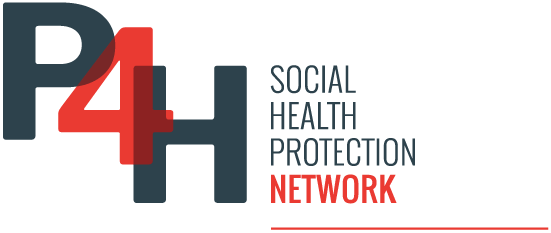The Civilian Insurance Programme (CIP) is a semi-autonomous fund managed by the Ministry of Health (MOH) providing 42% of Jordanians with formal health insurance. The CIP covers all civil servants and their dependents for care at MOH facilities, RMS facilities,...
Does the informal sector in Kenya have financial potential to sustainably prepay for health care? Implications for financing Universal Health Coverage in low-income settings
In this article, the authors critically examined the financial potential of informal sector entities, assessing their ability to prepay for health care and influence decisions regarding the Universal Health Coverage (UHC) financing approaches in Kenya. Data were...
Households forgoing healthcare as a measure of financial risk protection: an application to Liberia
This paper explores financial risk associated with access to healthcare services in Liberia. It also proposes a method to complement the standard financial risk protection measures in the WHO/World Bank global monitoring framework for Universal Health Coverage (UHC)....
Exploring for-profit healthcare providers’ perceptions of inclusion in the Zambia National Health Insurance Scheme: A qualitative content analysis
In 2019, Zambia introduced the National Health Insurance Scheme (NHIS) as a healthcare financing strategy to increase universal access to health care services and ensure financial risk protection. The NHI Management Authority is exploring accrediting the private for...
The influence of the National Health Insurance scheme of the Lao People’s Democratic Republic on healthcare access and catastrophic health expenditures for patients with chronic renal disease
Lao People’s Democratic Republic has implemented the National Health Insurance (NHI) since 2016. Recently, haemodialysis has been included under the benefit package of the NHI scheme. This study aims to analyze the effects of NHI on accessibility and catastrophic...
Inclusive healthcare and the political settlement in Cambodia
"This paper analysis the Cambodian health system, and more specifically the "Health Equity Funds" from a political economy perspective"
Can social accountability improve access to free public health care for the poor? Analysis of three Health Equity Fund configurations in Cambodia, 2015-17
"This article describes one example, that of Community-Managed Health Equity Funds (CMHEFs), as an approach to community engagement in Cambodia to improve poor people's use of their entitlement to fee-free health care at public health facilities"
Working short and working long: can primary healthcare be protected as a public good in Lebanon today?
Protracted conflict in Lebanon has been a threat to the public healthcare system and the public Primary Healthcare Network (PHCN) in the country now aggravated by the COVID 19 Pandemic. This article looks at the challenges including the COVID 19, the civil war and the...
The Projection of Iran’s Healthcare Expenditures By 2030: Evidence of a Time-Series Analysis
The projection of levels and composition of financial resources for healthcare expenditure (HCE) and relevant trends can provide a basis for future health financing reforms. This study projects Iran’s HCEs by the sources of funds- government health expenditure, social...
Estimating health plan costs with the OneHealth tool, Cambodia
"The article describes how the health ministry used the OneHealth tool to inform development and prioritasation of the strategy and its targets, how much it will cost to implement the plan, and if there are sufficient financial resources available to cover costs"
Exploring the determinants of distress health financing in Cambodia
"The authors investigated distress health financing parctices and associated factors among Cambodian households, using primary data from a nationally representative household survey of 5000 households"
Transforming health systems financing in Lower Mekong: making sure the poor are not left behing.
"This supplement shares lessons for health financing based on the experiences of three countries in the Lower Mekong Region - Cambodia, Lao PDR and Myanmar"
When “substandard” is the standard, who decides what is appropriate? Exploring healthcare provision in Cambodia
"Based on qualitative data collected in malaria and (para)typhoid fever projects, the authors describe falsified labortory test results, dubious diagnostic practices of both unlicensed and licensed doctors, the sales of substandard preparations and combinations of...
Thailand’s COVID-19: How public financial management facilitated effective and accountable health sector responses
This study aims to analyze how public financial management (PFM) in Thailand adapted to support the purchase of COVID-19 related health services and vaccines. The limitations which delayed implementation on the budget execution have been discussed. Findings show that...
Can National Health Insurance pave the way to Universal Health Coverage in sub-Saharan Africa?
African leaders across the continent have made bold commitments to attain Universal Health Coverage (UHC). One way to show this commitment has been through exploring National Health Insurance Schemes (NHIS). In this study, the authors examine African country...
